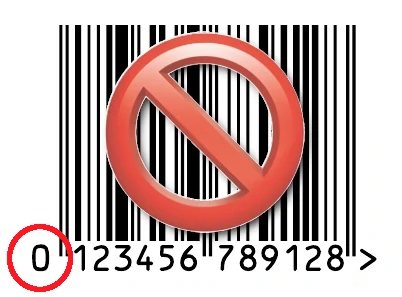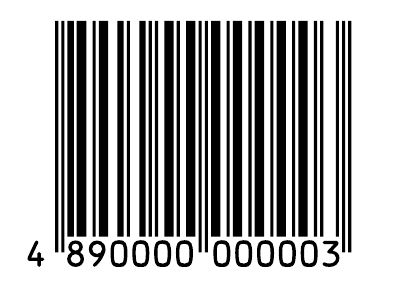What types of barcode I must to use in my cosmetic product?
When choosing barcodes for your cosmetic products, you should consider several types depending on your specific needs and target market. Here's a report on the main barcode types you should consider: Universal Product Code (UPC)
- UPC barcodes are essential if you plan to sell your cosmetics in North American retail stores.
- UPC-A: This is the standard 12-digit barcode widely used in retail environments.
- UPC-E: A compact 6-digit version of UPC-A, ideal for small cosmetic packages like lipsticks, concealers, and mascara tubes.
European Article Number (EAN) If you're targeting international markets, especially in Europe, or focusing on e-commerce, EAN barcodes are more appropriate.
- EAN-13: The most common format, consisting of 13 digits.
- EAN-8: An 8-digit version used for smaller products.
Two-Dimensional (2D) Barcodes For more advanced functionality and information storage, consider:
- QR Codes: These can store more information, including product ingredients, production processes, and promotional activities.
- Data Matrix Codes: Useful for small products and can store a significant amount of data6.
Choosing the Right Barcode Your choice should be based on:
- Target market: UPC for North America, EAN for Europe and international markets.
- Product size: UPC-E or EAN-8 for smaller items.
- Information needs: 2D barcodes for more detailed product information.
- Retail requirements: Some retailers may have specific barcode standards.
- Regulatory compliance: Ensure your chosen barcode meets local regulations.
Remember, the barcode you choose must comply with industry standards and regulations while meeting your specific business needs and target market requirements.

Are there specific regulations for barcodes on cosmetic products? Yes, there are specific regulations for barcodes on cosmetic products, although they may vary depending on the region and market you're targeting. Here are some key points regarding barcode regulations for cosmetics:
- Compliance with industry standards: Barcodes on cosmetic products must comply with industry regulations and standards to ensure proper labeling and packaging.
- Traceability requirements: Many jurisdictions require barcodes on cosmetics to ensure traceability and consumer safety. This allows for quick responses to safety recalls and verification of product authenticity.
- Information inclusion: Barcodes must facilitate accurate labeling, including essential information such as ingredients, expiration dates, and batch numbers.
- Market-specific requirements: Different markets may have varying barcode standards. For example, UPC is commonly used in North America, while EAN is more prevalent in Europe.
- Retail and e-commerce platform policies: Some retailers and e-commerce platforms have specific barcode standards and policies that cosmetic brands must adhere to.
- GS1 standards: Many online marketplaces and retail stores recommend using barcodes obtained directly from GS1, as they use the GS1 database to verify product authenticity.
- New regulations: In some regions, new regulations have been implemented regarding cosmetic product information. For instance, a recent regulation requires the inclusion of the product's barcode along with its category and name.
While specific regulations may differ by region, it's crucial for cosmetic brands to ensure their barcodes meet the requirements of their target markets and comply with relevant industry standards to avoid potential issues with product listings or sales.
Can I use a barcode for both cosmetic products and other types of products? Yes, you can use the same type of barcode for both cosmetic products and other types of products. There's no difference between barcodes for cosmetic products and any other type of product. The standard barcodes used across industries, such as UPC (Universal Product Code) and EAN (European Article Number), are suitable for cosmetics as well as other product categories like toiletries, food, and alcohol. The choice of barcode depends more on your target market and sales channels rather than the product type:
- UPC barcodes are commonly used in the United States and Canada, especially for physical retail stores.
- EAN barcodes are more widely used internationally, particularly in Europe, and are suitable for both online and global markets.
When selecting a barcode for your products, consider the following factors:
- Where you plan to sell (e.g., North America, Europe, or globally)
- Your sales channels (e.g., physical retail stores or e-commerce platforms)
- Specific requirements of retailers or e-commerce platforms you intend to use
Regardless of the product type, it's crucial to obtain unique barcodes for each distinct product to ensure proper inventory management, traceability, and compliance with industry standards.
Buy the codes you need at Hong Kong Barcodes
We will give you the same official codes as them but without having to pay life annuities.
If you need a code, you buy a code, pay for it and use it. And we will also give it to you generated in EPS, PDF and JPEG, with a guarantee certificate.
Oh! And the most complete instructions you could ever need, in PDF, plus unlimited technical support, cloud space so you always have them at your disposal and a lifetime guarantee.
How much do barcodes cost?
HERE is a link to the packages for sale.
You will see that if you place the mouse on the package, the price will appear.
